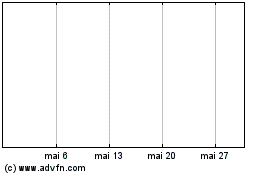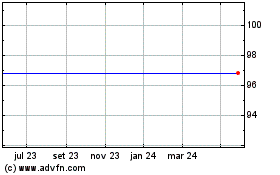Press Release: Sarclisa obtains first approval in China for the
treatment of adult patients with relapsed or refractory multiple
myeloma
Sarclisa obtains first approval in China for
the treatment of adult patients with relapsed or refractory
multiple myeloma
- Approval based on positive pivotal
ICARIA-MM phase 3 study using the China-based IsaFiRsT real-world
study as bridging data, which demonstrated Sarclisa and the
standard treatment Pd, improved responses and long-term outcomes
compared to Pd alone in R/R MM patients
- Sarclisa-Pd is currently
recommended by the Chinese Society of Clinical Oncology (CCSCO) and
Chinese Anti-Cancer Association (CACA) treatment guidelines for
this patient population
Paris, January 13, 2025. The
National Medical Products Administration (NMPA) in China has
approved Sarclisa, an anti-CD38 medicine, in combination with
pomalidomide and dexamethasone (Pd) for the treatment of adult
patients with multiple myeloma (MM) who have received at least one
prior line of therapy, including lenalidomide and a proteasome
inhibitor.
This approval is based on results from the
pivotal ICARIA-MM phase 3 study, using the China-based IsaFiRsT
real-world study as bridging data. The ICARIA-MM study demonstrated
Sarclisa in combination with Pd significantly reduced the risk of
disease progression or death by 40% (HR 0.596, 95% CI 0.44-0.81,
p=0.001), and resulted in a clinically meaningful, 6.9-month
improvement in overall survival (OS) (HR=0.78; log-rank 1-sided
P=0.0319), compared to Pd alone. Additionally, the IsaFiRsT study,
which is the first real-world study for the registration of an
anti-CD38 therapy in combination with Pd in China, showed an
overall response rate (ORR) of 82.6% among relapsed or refractory
multiple myeloma (R/R MM) adult patients.
Olivier Nataf
Global Head, Oncology
“This approval marks an important milestone for Sanofi in
China. The results of the ICARIA-MM phase 3 study, coupled with the
real-world IsaFiRsT study, highlight the benefit of Sarclisa for
patients living with multiple myeloma and the importance of
innovative regulatory pathways for timely access to different
treatments. We look forward to continuing to build strong
partnerships with the medical community, local companies, and
authorities in China as we work to bring more innovative treatments
to patients.”
Through the Lecheng Pilot for real-world data
application, the NMPA has increasingly used real-world evidence
(RWE) to help accelerate the review and approval of innovative
therapies and medical devices in China. Sarclisa was one of the
first three treatments authorized for real-world studies as part of
the pilot program and is the first blood cancer treatment approved
based on RWE, in addition to clinical data.
In addition to the NMPA approval, the Chinese
Society of Clinical Oncology (CSCO) and Chinese Anti-Cancer
Association (CACA) guidelines include Sarclisa-Pd as a "Category I
Recommendation" and the "Preferred Option" for the treatment of
patients with first-relapsed MM. Beyond R/R MM, a regulatory
submission for Sarclisa in combination with bortezomib,
lenalidomide and dexamethasone (VRd) for newly diagnosed multiple
myeloma (NDMM) in adult patients not eligible for autologous stem
cell transplant, is also under review in China with a final
decision expected in the coming months.
As one of the first multinational companies to
enter China in 1982, Sanofi is committed to accelerating the
introduction of innovative medicines and vaccines into China,
aiming to transform the practice of medicine for the benefit of
more Chinese people.
About the ICARIA-MM study
ICARIA-MM was a pivotal phase 3 randomized, open-label,
multi-center trial evaluating Sarclisa in combination with Pd
versus Pd alone in patients with R/R MM. The study enrolled 307
patients with R/R MM across 96 centers spanning 24 countries.
Overall, patients had received a median of three prior lines of
anti-myeloma therapies, including at least two consecutive cycles
of lenalidomide and a proteasome inhibitor given alone or in
combination.
During the trial, Sarclisa was administered by
intravenous infusion at a dose of 10mg/kg once weekly for four
weeks, then every other week for 28-day cycles in combination with
standard doses of Pd for the duration of treatment. The primary
endpoint of ICARIA-MM was progression-free survival (PFS). Key
secondary endpoints included ORR and OS.
About the IsaFiRsT study
The IsaFiRsT study was a single-arm, observational, prospective,
real-world study evaluating Sarclisa in combination with Pd in
patients with R/R MM. The study enrolled 24 patients with R/R MM at
one site in China. Overall, patients received a median of three
prior lines of therapy, including lenalidomide and a proteasome
inhibitor, and had measurable serum or urine M-protein.
During the trial, Sarclisa was administered
through an intravenous infusion at a dose of 10mg/kg once weekly
for four weeks, then every other week for 28-day cycles in
combination with standard doses of Pd for the duration of
treatment. Treatment continued until disease progression or
unacceptable toxicity. The primary endpoint of IsaFiRsT was ORR.
Key secondary endpoints included PFS, OS, duration of response
(DOR) and safety.
About Sarclisa
Sarclisa (isatuximab) is a CD38 monoclonal antibody that binds to a
specific epitope on the CD38 receptor on MM cells, inducing
distinct antitumor activity. It is designed to work through
multiple mechanisms of action including programmed tumor cell death
(apoptosis) and immunomodulatory activity. CD38 is highly and
uniformly expressed on the surface of MM cells, making it a target
for antibody-based therapeutics such as Sarclisa. In the US, the
non-proprietary name for Sarclisa is isatuximab-irfc, with irfc as
the suffix designated in accordance with nonproprietary naming of
biological products guidance for industry issued by the US FDA.
Currently, Sarclisa is approved in more than 50
countries, including the US and EU, across two indications;
Sarclisa is approved under an additional indication in the US.
Based on the ICARIA-MM phase 3 study, Sarclisa is approved in
combination with Pd for the treatment of patients with R/R MM who
have received ≥2 prior therapies, including lenalidomide and a
proteasome inhibitor, and who progressed on last therapy. Based on
the IKEMA phase 3 study, Sarclisa is also approved in 50 countries
in combination with carfilzomib and dexamethasone, including in the
US for the treatment of patients with R/R MM who have received 1–3
prior lines of therapy and in the EU for patients with MM who have
received at least 1 prior therapy. In the US, Sarclisa is approved
in combination with VRd as a front-line treatment option for adult
patients with NDMM not eligible for transplant based on the IMROZ
phase 3 study. On November 14, 2024, the European Medicines Agency
(EMA)’s Committee for Medicinal Products for Human Use (CHMP)
adopted a positive opinion recommending the approval of
Sarclisa-VRd in this patient population. A final decision is
expected in the coming months.
Sanofi continues to advance Sarclisa as part of
a patient-centric clinical development program, which includes
several phase 2 and phase 3 studies across the MM treatment
continuum spanning six potential indications. In addition, the
company is evaluating a subcutaneous administration method for
Sarclisa in clinical studies. The safety and efficacy of Sarclisa
has not been evaluated by any regulatory authority outside of its
approved indications and methods of delivery.
In striving to become the number one
immunoscience company globally, Sanofi remains committed to
advancing oncology innovation. Through focused strategic decisions
the company has reshaped and prioritized its pipeline, leveraging
its expertise in immunoscience to drive progress. Efforts are
centered on difficult-to-treat often rare cancers such as select
hematologic malignancies and solid tumors with critical unmet
needs, including multiple myeloma, acute myeloid leukemia, certain
types of lymphomas, as well as gastrointestinal and lung
cancers.
For more information on Sarclisa clinical
studies, please visit www.clinicaltrials.gov.
About Sanofi
We are an innovative global healthcare company, driven by one
purpose: we chase the miracles of science to improve people’s
lives. Our team, across the world, is dedicated to transforming the
practice of medicine by working to turn the impossible into the
possible. We provide potentially life-changing treatment options
and life-saving vaccine protection to millions of people globally,
while putting sustainability and social responsibility at the
center of our ambitions.
Sanofi is listed on EURONEXT: SAN and NASDAQ: SNY
Media Relations
Sandrine Guendoul | +33 6 25 09 14 25
| sandrine.guendoul@sanofi.com
Evan Berland | +1 215 432 0234 |
evan.berland@sanofi.com
Nicolas Obrist | +33 6 77 21 27 55 |
nicolas.obrist@sanofi.com
Léo Le Bourhis | +33 6 75 06 43 81 |
leo.lebourhis@sanofi.com
Victor Rouault | +33 6 70 93 71 40
| victor.rouault@sanofi.com
Timothy Gilbert | +1 516 521 2929 |
timothy.gilbert@sanofi.com
Investor Relations
Thomas Kudsk Larsen |+44 7545 513 693 |
thomas.larsen@sanofi.com
Alizé Kaisserian | +33 6 47 04 12 11 |
alize.kaisserian@sanofi.com
Felix Lauscher | +1 908 612
7239 | felix.lauscher@sanofi.com
Keita Browne | +1 781 249 1766 |
keita.browne@sanofi.com
Nathalie Pham | +33 7 85 93 30 17 |
nathalie.pham@sanofi.com
Tarik Elgoutni | +1 617 710 3587 |
tarik.elgoutni@sanofi.com
Thibaud Châtelet | +33 6 80 80 89 90 |
thibaud.chatelet@sanofi.com
Sanofi forward-looking
statements
This press release contains forward-looking statements as
defined in the Private Securities Litigation Reform Act of 1995, as
amended. Forward-looking statements are statements that are not
historical facts. These statements include projections and
estimates regarding the marketing and other potential of the
product, or regarding potential future revenues from the product.
Forward-looking statements are generally identified by the words
“expects”, “anticipates”, “believes”, “intends”, “estimates”,
“plans” and similar expressions. Although Sanofi’s management
believes that the expectations reflected in such forward-looking
statements are reasonable, investors are cautioned that
forward-looking information and statements are subject to various
risks and uncertainties, many of which are difficult to predict and
generally beyond the control of Sanofi, that could cause actual
results and developments to differ materially from those expressed
in, or implied or projected by, the forward-looking information and
statements. These risks and uncertainties include among other
things, unexpected regulatory actions or delays, or government
regulation generally, that could affect the availability or
commercial potential of the product, the fact that product may not
be commercially successful, the uncertainties inherent in research
and development, including future clinical data and analysis of
existing clinical data relating to the product, including post
marketing, unexpected safety, quality or manufacturing issues,
competition in general, risks associated with intellectual property
and any related future litigation and the ultimate outcome of such
litigation, and volatile economic and market conditions, and the
impact that pandemics or other global crises may have on us, our
customers, suppliers, vendors, and other business partners, and the
financial condition of any one of them, as well as on our employees
and on the global economy as a whole. The risks and uncertainties
also include the uncertainties discussed or identified in the
public filings with the SEC and the AMF made by Sanofi, including
those listed under “Risk Factors” and “Cautionary Statement
Regarding Forward-Looking Statements” in Sanofi’s annual report on
Form 20-F for the year ended December 31, 2023. Other than as
required by applicable law, Sanofi does not undertake any
obligation to update or revise any forward-looking information or
statements.
All trademarks mentioned in this press
release are the property of the Sanofi group.


Sanofi (BIT:SANF)
Gráfico Histórico do Ativo
De Dez 2024 até Jan 2025

Sanofi (BIT:SANF)
Gráfico Histórico do Ativo
De Jan 2024 até Jan 2025
